The People of the Republic of China
The People of the Republic of China

Image Source
China is a multinational nation with a populace made out of an expansive number of ethnic and linguistic gatherings. So completely did the Han dynasty build up what was from thereon considered Chinese culture that Han turned into the Chinese word indicating somebody who is Chinese. The Han is the biggest ethnic gathering, and it dwarfs the minority gatherings or minority nationalities in each region aside from Tibet and Xinjiang.
The Han form the considerable homogeneous mass of the Chinese people, having a similar culture, similar traditions, and the same composed language. Consequently, the general reason for characterizing the nation's populace is to a great extent linguistic as opposed to ethnic.
Exactly 55 minority bunches are spread over around three-fifths of the nation's aggregate region. Where these minority bunches are found in extensive numbers, they have been given some similarity of self-governance and self-government, self-governing districts of a few sorts have been built up on the premise of the geographic dispersion of nationalities.
The administration assumes incredible praise for its treatment of these minorities, it has propelled their financial prosperity, raised their expectations for everyday comforts, gave instructive offices, advanced their national languages and cultures, and raised their education levels, and also presented a composed language where none existed already. It must be noted, be that as it may, that a few minorities have been liable to differing degrees of restraint.
Of the 50 odd minority languages, just 20 had composed forms previously the happening to the communist administration in 1949, and just moderately few composed language were in ordinary utilize. Other composed languages were utilized mostly for religious purposes and by a predetermined number of people. Instructive foundations for national minorities are a component of numerous expansive urban communities, eminently Beijing, Wuhan, Chengdu, and Lanzhou.
China Minority Groups
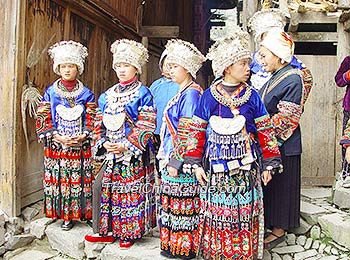
Image Source
Bai
The Bai people live in northwestern Yunnan area, southwest China. Minjia is simply the Chinese name for them,they call Bai or Bo in their own particular language, which has been named a Tibeto-Burman language. As of not long ago their language was not composed. It contains many words acquired from Chinese however is itself a non-Chinese, tonal, polysyllabic language with a uniquely extraordinary syntactic structure.
Involving a triangular range from Shigu on the upper Yangtze River down to Dali at the foot of Lake Er, the Bai in the mid 21st century were evaluated to number almost two million, about portion of whom lived on the ripe plain between the Cang Mountains and the lake.
Since the foundation of the People's Republic of China, the Bai, as per the Communist Party's approach toward non-Chinese peoples, have been given status as a national minority. Their main city, Dali, was from the 6th to the 9th century the capital of the kingdom of Nanzhao. The Bai most likely effectively formed the heft of the number of inhabitants in the territory around then.
The greater part of the Bai are cultivators of wet rice, alongside different vegetables and organic products. Those in the slopes develop grain, buckwheat, oats, and beans. The lake is vigorously angled. They have their own social and connection association, in view of the town and the more distant family. Their religion varies little from that of the Chinese, they adore nearby gods and familial spirits and in addition Buddhist and Daoist divine beings.
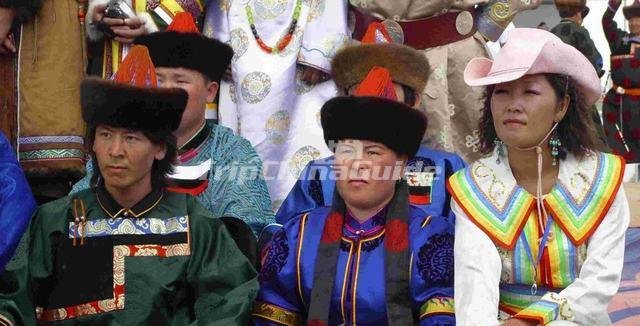
Image Source
Daur
Another ethnic minority of China live predominantly in the eastern bit of Inner Mongolia self-governing area and western Heilongjiang territory of China and were assessed in the mid 21st century to number more than 132,000. Their language, which differs broadly enough from other Mongolian languages to once have been believed to be Tungusic or a blend of Mongolian and Tungus, is currently known to be a bygone Mongolian lingo that jelly highlights found in thirteenth century records.
Russian pilgrims in the seventeenth century found the Daur entrenched in eastern Transbaikalia and the Amur area, and the Orthodox church sent teachers to them in 1682. The Chinese government, not wishing the Daur to fall under Russian influence, resettled them. By the mid 20th century numerous Daur lived in Heilongjiang, around the city of Hailar, and in the Nen River valley close to the city of Qiqihar.
Their essential occupations are agriculture, logging, chasing, stock raising, and steed rearing. The family framework wins. Their religion is shamanistic, albeit some are followers of Tibetan Buddhism.
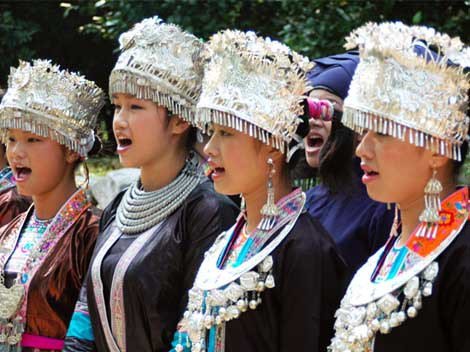
Image Source
Dong
As per most etymologists the Dong talk a Kam-Sui language that is firmly identified with the Tai languages, and they call themselves Kam. They initially showed up in China amid the Song dynasty, moving southwest in a progression of movements, perhaps constrained by the propelling Mongols. Moved today in inadequately populated Guizhou, they share the region with the Buyei, another official ethnic minority. Most Dong are marsh ranchers with glutinous rice as their essential harvest. They have likewise since quite a while ago created cotton and cotton fabric available to be purchased. The Dong are known as fish reproducers, bringing fish up in exceptionally developed lakes and in some overwhelmed paddy fields.
Before 1949 they were coordinated into the occasional market arrangement of southern China and since the opening of China have progressively moved to creation for the market. Like related minority peoples, in any case, dissimilar to the Han Chinese, they live in extensive houses based on pilings. They are known for pagoda-like wooden drum towers that can be as tall as 30 meters.
These towers and unmistakable secured spans, together with restored celebrations, especially those including water-buffalo battles have made some Dong towns appealing for travelers.
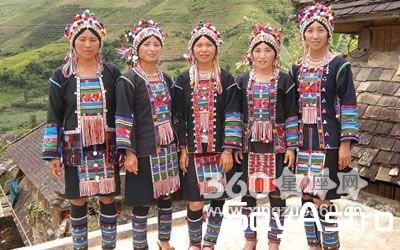
Image Source
Hani
The Hani live for the most part on the high southwestern level of Yunnan territory, China, particularly moved in the southwestern corner. There are likewise a few a large number of Hani or related peoples in northern Thailand, Laos, and Vietnam and in eastern Myanmar. Inside and out they numbered approximately two million in the mid 21st century.
Thirteen subgroups of this official grouping call themselves by different names, yet they talk commonly coherent Tibeto-Burman languages of the Sino-Tibetan language family. Delegated tribes of the bigger Yi ethnic gathering, the Hani are accepted to be a branch of the antiquated Qiang from the north, showing up in the Dadu River area in Han times. They were marginally invaded by Thai who were escaping the Mongols. Contemporary Hani are for the most part ranchers who create two brilliant sorts of tea and are additionally known for their wonderful terraced rice paddies.
A particular subgroup of the Hani known as the Akha live in China, and in addition parts of Myanmar, Thailand, Vietnam, Laos, and Cambodia. They are accepted to be of Chinese beginning, however, for an assortment of reasons, they have carried on with a meandering life. A remarkable element of female dress is an intricate hat made with silver or white dots and silver coins. This and different highlights of the Akha culture are disseminating under weight of both minister work and other outside powers.
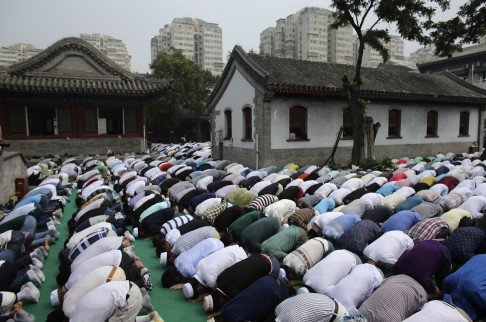
Image Source
Hui
The almost 10 million Hui are Chinese Muslims who have intermixed with the Han Chinese all through China however are moderately packed in western China, in the territories of Xinjiang, Ningxia, Gansu, Qinghai, Henan, Hebei, Shandong, and Yunnan. Extensive numbers likewise live in Anhui, Liaoning, and Beijing. The Hui are likewise found on the outskirts amongst China and Myanmar and in Kazakhstan, Uzbekistan, and Kyrgyzstan, in Central Asia. They communicate in Mandarin as a first language.
The Hui are recognized as Hui just in the zone of their heaviest focus, the Hui Autonomous Region of Ningxia. Other Hui people group are composed as independent prefectures in Xinjiang and as self-ruling provinces in Qinghai, Hebei, Guizhou, and Yunnan. Progressively, the Hui have been moving from their scattered settlements into the region of real focus, conceivably to encourage intermarriage with different Muslims.
The predecessors of the Hui were merchants, officers, handicraftsmen, and researchers who came to China from Islamic Persia and Central Asia from the seventh to the thirteenth century. After these progenitors settled in China, they intermarried with the Han Chinese, Uighur, and Mongolian nationalities and came to speak Chinese languages, or vernaculars. In the end their appearance and other social attributes turned out to be completely Chinese.
They now draw in for the most part in agriculture, and the majority of them live in provincial territories, albeit urban tenants are altogether expanding. There have been various well known Hui masterminds, guides, researchers, and craftsmen. The Hui Brigade was dynamic in World War II, in the resistance against Japan.
We can see that base on this initial information about the Chinese people, most of them are born skillful. They had really started their lives working very hard everyday which makes them who they are today. More minority group of people will be posted in the future.
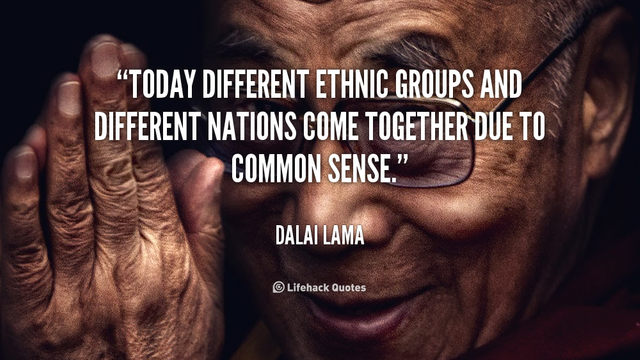
Image Source
Good article, my grandfather comes from China, and married with my grandmother, Indigenous Javanese. My family have mixed culture from China and Javanese together. But sadly some people here still see us as outsider. But I grateful to be born in mixed culture. So I can understand and have open minded to others culture. Nice :)
The laws of people has flaws.
How are you? Its been a while
Very interesting! I can't believe how much they vary :) It's written really well and by the pictures you can already see a big difference! It's great to read about their past and what they became :)
Glad that you like it
Thanks for sharing ,
Upvoted !
By the way ,I started following you and I would appreciate your follow back too .
please visit my blog and vote me too
The original Chinese are black! The first Chinese Empire was a African Empire that laid the first foundation in Chinese civilization! Till Alexander the Great conquered China thousands of years ago and this how they interracial mixed together!
Impressive. Thanks for this great info. Can you give me something to read on about this?
@juvyjabian Your generate up is spectacular. Mad regard for sticking as a result of many of the hardships, Many of us would've Give up A great deal before..
Thanks
@juvyjabian its really intriguing data..excellent submit preserve it up..